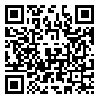BibTeX | RIS | EndNote | Medlars | ProCite | Reference Manager | RefWorks
Send citation to:
URL: http://ijpcp.iums.ac.ir/article-1-2680-en.html
2- Department of Clinical Psychology, Faculty of Education & Psychology, University of Shiraz
Objectives: The aim of this study was to investigate the mediation role of ruminative response style in the relationship between dysfunctional attitudes and depression symptoms.
Methods: This correlational and descriptive study was conducted on 200 undergraduate students (99 females and 101 males) who were selected by convenience sampling method out of Shiraz University students in academic year 2012-2013. To measure the study variables, the revised form of depression scale, short form of dysfunctional attitudes scale and ruminative response style scale were used. To examine the study hypotheses, the simultaneous multiple regression model according to Baron and Kenny (1986) and structural equation modelling were used. To study the fitness of the proposed model, the absolute, adjusted and comparative fit indices and to determine the significance of indirect effect of moderate variable, the snowball sampling were used by SPSS16 and Amos graphic.
Results: The results showed that dysfunctional attitudes were negative and significant predictor of depression symptoms both directly and indirectly through ruminative response style. Moreover, the results of the absolute (RMSEA= 0.06), comparative (CFI =0.97) and adjusted (AGFI=0.91) fit indices showed that the proposed model had a close relationship with data of fitness sample and the theoretical assumptions.
Conclusions: Finally, the model parameters matched the model in terms of optimal fit.
Received: 2017/03/12 | Accepted: 2017/01/1 | Published: 2017/03/12
| Rights and permissions | |
 |
This work is licensed under a Creative Commons Attribution-NonCommercial 4.0 International License. |





